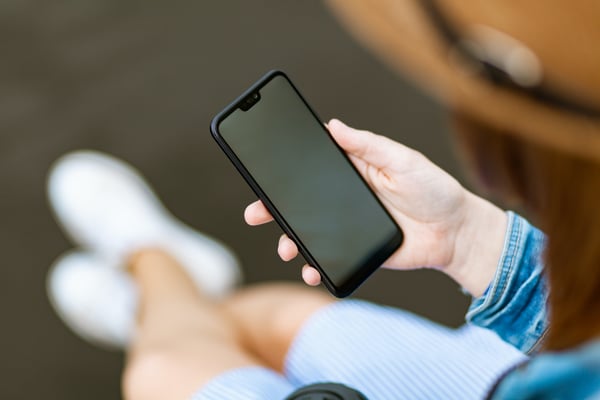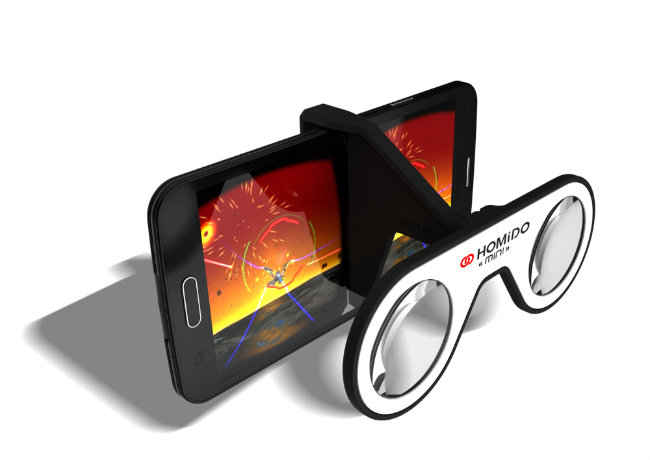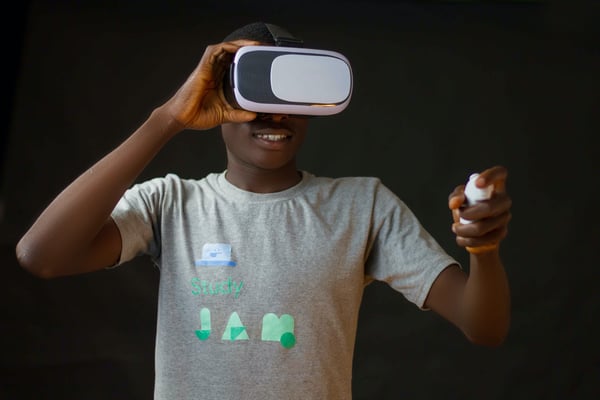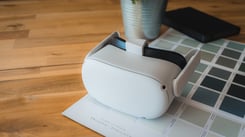VR news is everywhere these days. Product announcements dominate the tech industry with frequent news about new hardware and new experiences. And in the business world, the concept of The Metaverse is the internet’s newest obsession and many businesses are looking to have VR as the main point of interaction in the Metaverse.
If you still haven’t had experience with VR or are simply looking to learn more about the technology, you probably have some questions about how to get started with VR. Those looking for a more general introduction to VR should check out our article that goes over VR basics. But if you’re here to see how you can access VR right away at little to no cost, you’re in the right place. In this article, we’re going to go over just some of the many ways you can access VR without having to invest in top-of-the-line VR Headsets.
Phone It In
The best answer to the question “how do I access VR without a headset?” is probably something you already own, a smartphone! Smartphones have many of the same sensors and specs as some of the flagship VR headsets available today. They have gyroscopes, high-quality screens, and the ability to connect external controllers if needed. These sensors are used for a lot of different mixed reality experiences available on your phone such as 360 photography, viewing 360 videos, and augmented reality, but they’re just as useful for VR.

However, holding your phone up to your face and moving it around isn’t going to give you that full VR experience. If you are using an app designed for VR use, there will be two images displayed on your screen to achieve the stereoscopic effect in the virtual environment. And you will notice a fisheye effect in each image, meaning you need a tool to view the image normally.
So, while a phone can be the foundation in creating your VR experience you are most likely going to need an accessory of some sort to get that true VR experience. Luckily there are several options out there that are low cost, easy to access, and easy to share with others.
Homido Mini

Our first recommended accessory would be a pair of VR lens clips such as the Homido Mini. These clips can offer you a satisfactory VR experience that couldn’t be simpler to use. You easily clip on to your phone along the line breaking up the images (see image above) in whatever VR app you are using, and you are good to go. They have lenses to help you view the images displayed normally allowing each eye to view its respective image so that you get the full stereoscopic effect.
These clips have been one of our top recommendations at Yulio for quite some time for those looking to get a mobile VR experience. They are fairly inexpensive coming in around $15 for a pair and offer discounts when purchased in bulk if you are looking to supply your organization with tools to access VR. They can also be customized to your brand to pass out or allow clients to take home.
Cardboard Headsets
.jpg?width=606&name=googlecardboard%20(1).jpg)
Another option is a cardboard headset. Google cardboard made a bit of a splash when it first arrived, and it was a quick and easy introduction to VR for a lot of people. As well, it was a fair bit more cost-effective than their higher-end option, the Google Daydream. Essentially, they sent you a flat piece of cardboard and a pair of lenses and you would fold it into a very simple VR headset that you could slide your phone into. It helps to have your phone in an enclosed headset when viewing VR to complete the feeling of immersion, so these cardboard headsets were able to offer a step up from a pair of lens clips.
Today there are many different options of where you can get a cardboard headset, as well as several new designs. There are several organizations now that even offer up bulk orders of cardboard headsets that you can personalize with company branding and multiple choices of eco-friendly materials. It’s commonplace to see this kind of cardboard headset handed out at booths at a conference or sent out to a mailing list to help promote a company’s VR endeavor or experience created.
One caution - because phones are getting larger, some cardboard devices may not accurately line up the lenses with left and right side images, or even fit the phones - it’s something to be aware of if you are using them as give away times! It’s also worth being aware that some cardboard experiences are being phased out slowly.
Basic VR Headsets

Our final recommendation when it comes to setting up an optimal VR viewing experience with your phone is to use a prebuilt headset such as the Merge headset that is designed to have your phone slide in or clip in for viewing. The market for these is wide and varied and there can be an overwhelming amount to choose from. Some have more features than others, such as sliders for the lenses that can help improve focus or a Bluetooth remote that can be used when in your VR experience. And with a more solid plastic build, they are more durable than a cardboard headset.
In general, we recommend looking at your budget when comparing these headsets as the prices can vary a bit, but you can still find some rather inexpensive options out there that won’t set you back.
A Final Recommendation
Our final recommendation is to find VR experiences that allow you to view them in what we call a “fishtank” view. These are experiences on your phone and computer that don’t require a headset to view properly. With it, you can still interact with the virtual experience with your phone or mouse. While you do not get a stereoscopic image that adds depth and immersion to the experience, it can still be an extremely powerful tool that can make an impact. At Yulio, this “fishtank” view is something we offer to those wanting to share their projects as it is very accessible and it comes with any Yulio license. Try it out below!
An example of our "fishtank" view
Take The Leap
We hope that this article has given you some ideas of where to get started with VR without the investment in a VR headset. We hope you get to experience the impact a virtual environment can make and start to consider the ways you can begin to incorporate it into your business. We will be here to make sure you have the tools you have to present your ideas and designs and create engaging virtual content.
Ready to dive in? Sign up for our Yulio 30-day free trial, where you can get full access to our platform and all our great enhancement features! Pair your headsets easily with our platform, and present them to your clients - see how easy it is to get started with Yulio.







